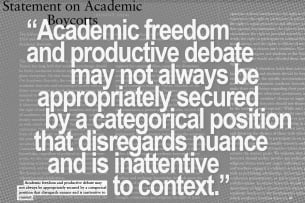Filter & Sort
Australia Caps International Student Enrollment

AAUP Faces Criticism for Reversal on Academic Boycotts
The American Association of University Professors announced Monday it had dropped its categorical opposition to the tactic. Critics say the organization has changed for the worse, but its new president isn’t backing down.

Funding Student Success: License Plate Purchases Help Students Study Abroad
Students, alumni and supporters of Troy University can purchase special branded license plates to display their school spirit and fund student success experiences for learners.

Defense Department Cuts 13 of its Language Flagship Programs
Linguists are concerned about the implications the elimination of these programs may have on foreign relations.

Report: The Value of Study Abroad for Student Success
An April report from Terra Dotta finds college students who participate in a study-away program believe it benefits their personal and professional growth.

Pitzer Drops Study Abroad in Israel. Will Others Follow?
Student activists say the decision was an ideological move long in the making. College officials say an academic boycott had nothing to do with it.
Canada Signals Leeway on International Student-Visa Caps
With Trudeau government emphasizing visa limits tied to applications and housing availability, more established institutions gain some reassurance.

It’s Time to Restore U.S. Study Abroad to China
The U.S. should restore Fulbright exchanges in China and encourage students to study there, Zhiqun Zhu writes.
Pagination
Pagination
- 2
- /
- 12